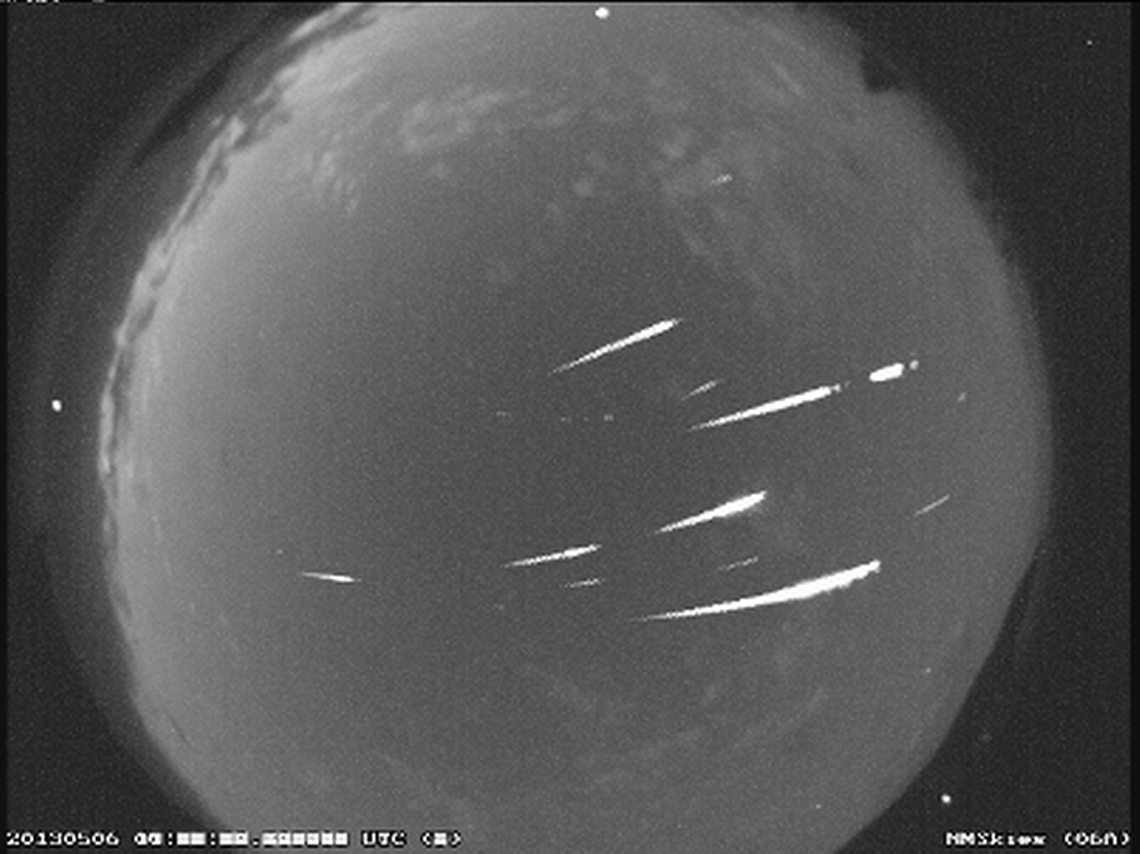Major meteor shower to peak in California sky. Here’s when — and how to catch a glimpse

- Oops!Something went wrong.Please try again later.
A major meteor shower will shoot across the California sky this weekend and you can catch a glimpse — under prime conditions.
The Eta Aquarids Meteor Shower has been active since April 15 and will end May 27, according to American Meteor Society. However, it will be peak on Sunday, May 5.
Sunday and Monday mornings before dawn will have the best viewing conditions, according to EarthSky, an Austin-based non-profit organization which shares updates on the cosmos.
If you’re willing to drive away from city lights, here’s what to know about the shower and how you can watch it in California:
What is the Eta Aquarids Meteor Shower?
The Eta Aquarids Meteor Shower is an annual event caused from debris shed by comet 1P/Halley, or Halley’s Comet, according to NASA.
The famous comet is named for Edmund Halley, an English astronomer who correctly predicted in 1705 that a single comet could make return trips to our orbit. The comet that proved him right was given his name and became the first known “periodic” comet.
It sheds ice and rock with each orbit, creating dust grains that produce the Eta Aquarids in the spring and the Orionids in the fall when they collide with Earth’s atmosphere.
The comet itself has not appeared since 1986. It won’t return until 2061.
How fast do the Eta Aquarids travel?
According to NASA, the Eta Aquarids “are known for their speed.”
As they shoot across the sky, they will travel at around 44 miles per second.
About 60 meteors pass every hour.
Where do meteors come from?
Meteors are leftover particles from comets and broken asteroids, according to NASA.
As comets orbit the sun, they leave dusty trails behind them.
When Earth passes through these trails, the bits of dust collide with Earth’s atmosphere, causing meteors to burn up and create bright streaks in the sky.
How can I watch the meteor shower in California?
To find the Eta Aquarids Meteor Shower, look for bright and fast meteors on Sunday evening and early Monday morning before dawn.
“Find an area well away from city lights or street lights,” NASA said on its website.
Be prepared with something to lie down on.
“Lie flat on your back with your feet facing east and look up, taking in as much of the sky as possible,” NASA said.
It should take about 30 minutes for your eyes to adjust to the dark, then you will begin to see the meteor shower.
“Be patient – the show will last until dawn, so you have plenty of time to catch a glimpse,” NASA said.
What do you want to know about life in Sacramento? Ask our service journalism team your top-of-mind questions in the module below or email servicejournalists@sacbee.com.

